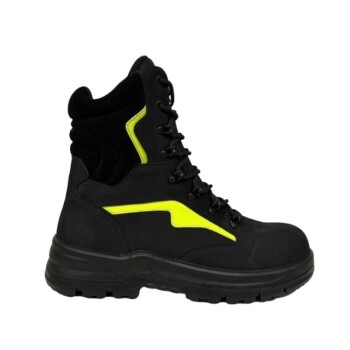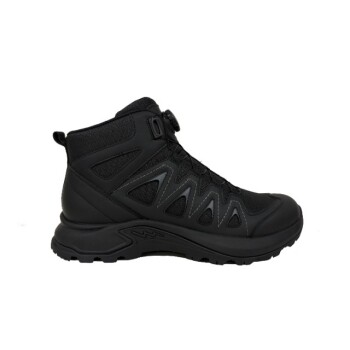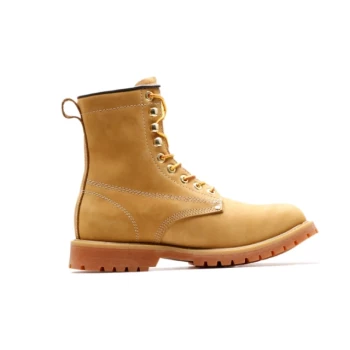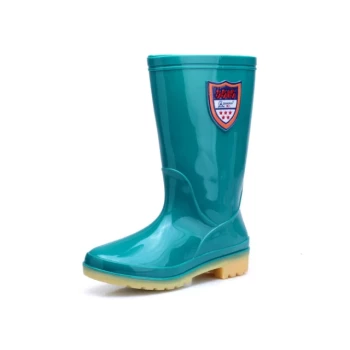The fundamental difference between 6-inch and 8-inch boots lies in the trade-off between ankle support and mobility. The extra two inches on an 8-inch boot provide significantly more stability and protection, while the lower cut of a 6-inch boot offers greater flexibility and is often lighter.
The choice between a 6-inch and 8-inch boot is not about which is superior overall, but which is the right tool for your specific environment and task. Your decision hinges on prioritizing either maximum protection or versatile mobility.
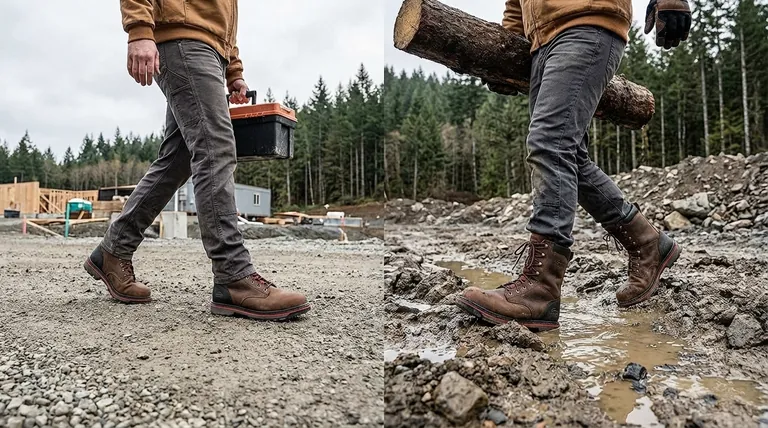
The Core Difference: Support vs. Mobility
The primary distinction is how the boot shaft interacts with your ankle. This single factor dictates the boot's ideal use case.
Ankle Support and Stability
An 8-inch boot shaft extends higher up the leg, providing a more comprehensive wrap around the ankle joint.
This added structure is critical when navigating uneven terrain, carrying heavy loads, or performing tasks that risk ankle rolls.
Flexibility and Weight
A 6-inch boot, often called an "ankle boot," terminates just above the ankle bone.
This lower profile allows for greater flexion and a more natural range of motion, making it more comfortable for walking on flat surfaces, driving, or everyday wear. They are also typically lighter.
Protection from the Elements
The height of the boot shaft is your first line of defense against the environment.
Debris and Water Ingress
The taller shaft of an 8-inch boot creates a more effective barrier against dirt, rocks, and brush.
It also significantly reduces the chance of water entering the boot when stepping in deep puddles, snow, or crossing shallow streams.
Hazard and Weather Resistance
For those working in hazardous conditions or harsh weather, 8-inch boots offer superior protection.
The additional coverage provides more insulation in cold environments and a better defense against scrapes and impacts when moving through dense undergrowth.
Understanding the Trade-offs
Choosing a boot height always involves accepting a set of compromises. Understanding these is key to avoiding frustration.
The Cost of Protection (8-Inch Boots)
The primary downsides of an 8-inch boot are increased weight and reduced flexibility, which can lead to faster fatigue during long days on your feet.
They can also be warmer in hot climates and may feel restrictive for tasks requiring frequent squatting or kneeling.
The Limits of Flexibility (6-Inch Boots)
While more comfortable for general use, 6-inch boots offer minimal ankle support, making them less suitable for rugged conditions.
Some users report that the boot top can cause discomfort by rubbing against the ankle bone. A common annoyance is pant cuffs getting caught on the top of the boot when sitting or climbing into a vehicle.
Making the Right Choice for Your Goal
Select your boot height based on the demands of your primary activity, not just aesthetics.
- If your primary focus is maximum support and protection: Choose 8-inch boots for demanding work, serious hiking on rough terrain, or exposure to harsh weather and hazards.
- If your primary focus is versatility and daily comfort: Choose 6-inch boots for light-duty work, workshop use, moderate trails, and general everyday wear.
Ultimately, the right boot is the one that best aligns with the mission you need it to accomplish.
Summary Table:
| Feature | 6-Inch Boots | 8-Inch Boots |
|---|---|---|
| Primary Focus | Versatility & Daily Comfort | Maximum Support & Protection |
| Ankle Support | Minimal | Superior |
| Mobility/Flexibility | High | Moderate |
| Weight | Lighter | Heavier |
| Protection (Debris/Water) | Standard | Enhanced |
| Ideal For | Light-duty work, everyday wear, driving | Rugged terrain, heavy loads, harsh conditions |
Need the Right Boots for Your Team or Brand?
As a large-scale manufacturer, 3515 produces a comprehensive range of 6-inch and 8-inch work boots for distributors, brand owners, and bulk clients. Our production capabilities ensure you get the perfect balance of support, mobility, and durability tailored to your customers' specific tasks.
Let's discuss your requirements: Contact our team today to get a quote or request samples.
Visual Guide
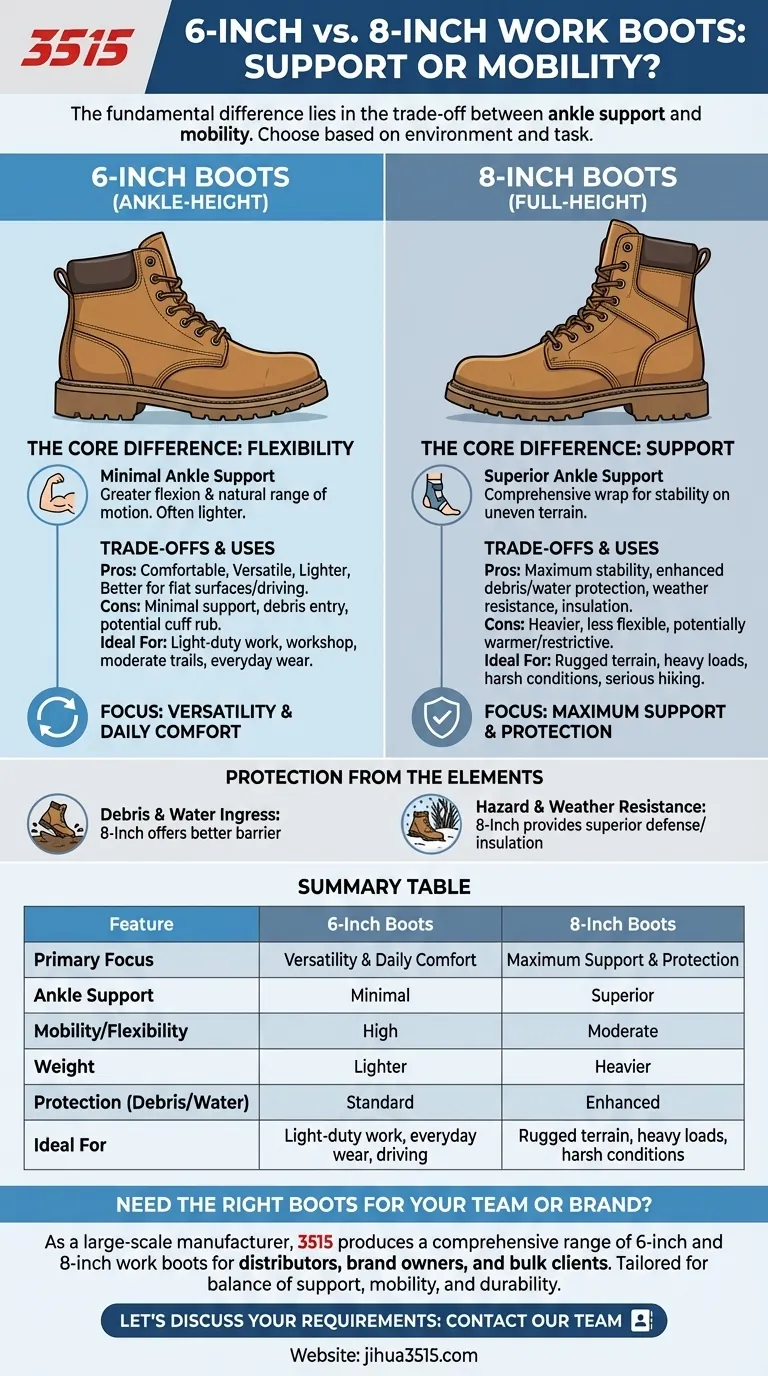
Related Products
- Safety Footwear Wholesale Manufacturer for Custom OEM/ODM Production
- Premium Flame-Retardant Waterproof Safety Boots and Shoes
- Wholesale Safety Footwear Manufacturer for Bulk & Custom OEM Orders
- Premium Wholesale Waterproof Safety Boots High Performance Protection for Industrial Markets
- Wholesale Durable Leather Work Boots | 8-Inch Goodyear Welt Manufacturer
People Also Ask
- How do safety shoes contribute to cost savings for companies? A Strategic Investment in Risk and Cost Management
- Do snake bite boots work? Your Ultimate Guide to Effective Snake Bite Protection
- What are the cultural perspectives on wearing shoes in the house? A Guide to Home Etiquette & Hygiene
- What are OSHA approved shoes? Understanding the Correct Standards for Workplace Safety
- Is safety-toe as good as steel toe? Choose the Right Protection for Your Job












